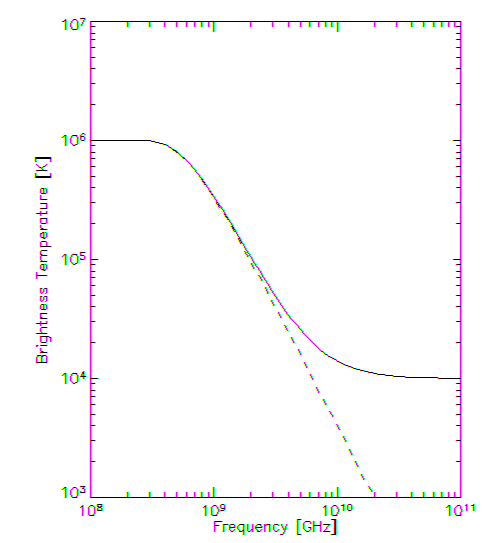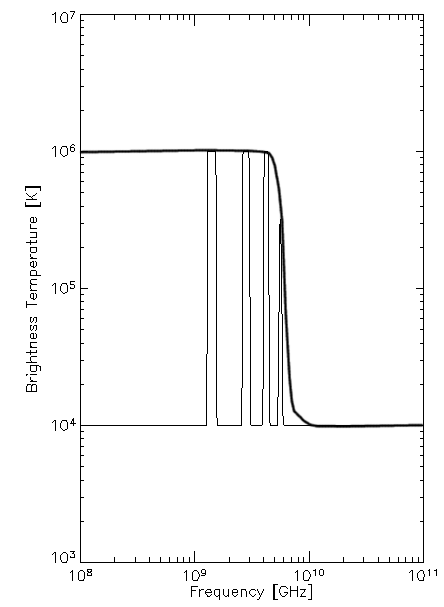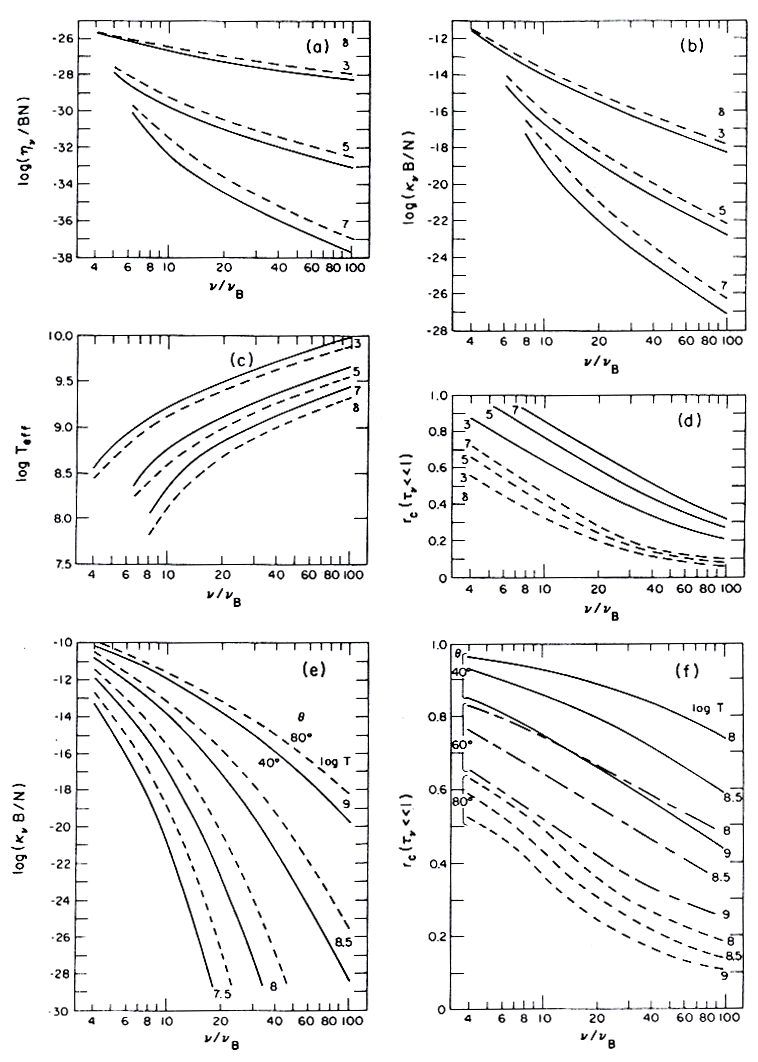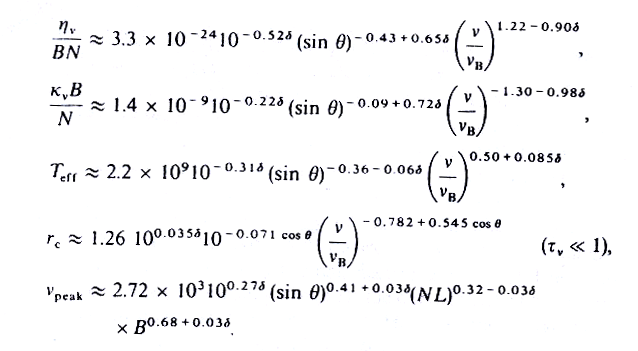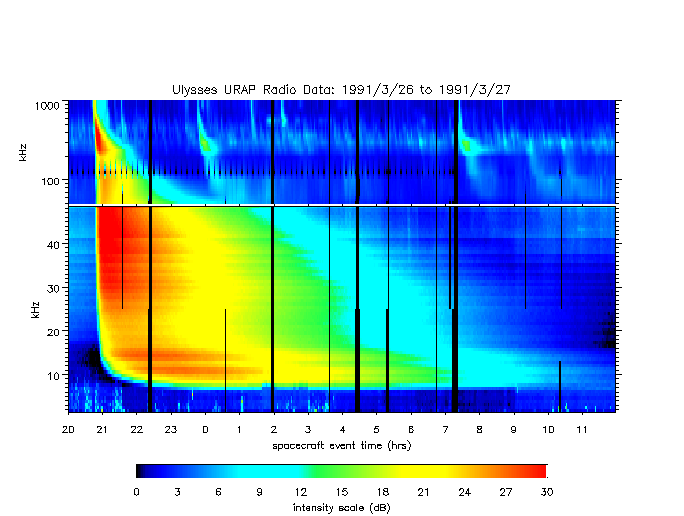We can rearrange
equation (1) to give a first-order ordinary differential equation (the
equation of radiative transfer) for I,
i.e.
dI/dl + κνI
= ην
. (3)
Such a differential equation can be solved by use
of an integrating factor, so let us remind ourselves of that approach:
The above equation is of the form y' + p(x) y = q(x), where y = I, x = l, p(x) = κν, and q(x) = ην. Here we are using the notation y' = dy/dx = dI/dl. To obtain the integrating factor m(x), multiply through by m(x) and seek a solution [m(x)y]' = m(x)q(x), that is:
m(x)y' + m(x)p(x)y = m(x)q(x)
and
m(x)y' + m(x)' y = m(x)q(x)
from which we identify m(x)' = m(x)p(x). The solution to this gives the integrating factor m(x) = e p(x)dx = e
p(x)dx = e κν dl.
Using this integrating factor, we can solve the easier equation [m(x)y]' = m(x)q(x), i.e.
κν dl.
Using this integrating factor, we can solve the easier equation [m(x)y]' = m(x)q(x), i.e.
|
|
 |
m(x)q(x)dx.
|
y = |
___________________
|
| |
m(x) |
We want to use this form to solve the equation, but in order to do so we have to be very clear about the geometry this applies to. Below is the new geometry we are now interested in. We are considering an emitting element as before, but it is located at l'', somewhere along the path from 0 to l, and we will integrate over all emitting elements of length dl' from 0 to l. The key thing to notice is that emission from the element at l'' will only be absorbed over the remaining length, from l'' to l.
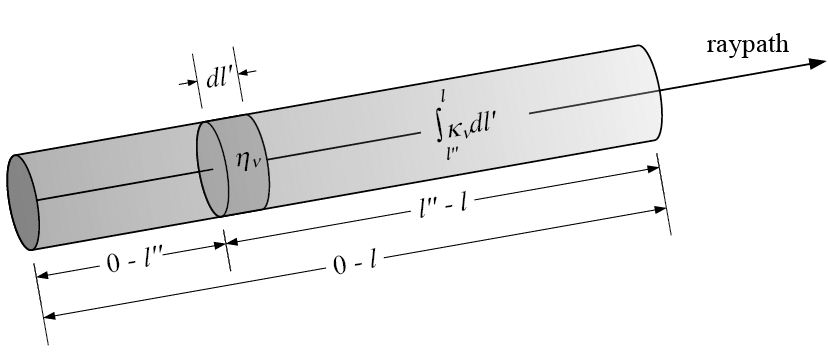
Substituting the values for x, y, m(x), q(x) in the above equation, we have the differential equation we wish to solve:
 .
.
It is at the point of integrating both sides with respect to l that we have to introduce the "dummy" integration variable l'' on the right-hand side, which corresponds to the location of our volume element as in the above figure.
 .
.
We now isolate I(l) on the left to get:
 .
.
Note that the exponential outside the integral over dl'' is a constant--it is just a numerical factor. Hence, it can be moved inside the integral for an important simplification:
 .
.
The interpretation of the integral quantity is that the emission from an element at position dl'' along the raypath is absorbed by the overlying material, i.e. there is extinction of the emission found by integrating the absorption coefficient from l'' to l, the top of the column. Finally, we can use the concept of optical depth we introduced earlier, which is formally just a change of variable:

When we do this, the limits of the integration, originally from 0 to l, go from τ to 0, because optical depth is defined, as the name implies, as a depth from 0, where we are, to the depth of the source.

It is very useful to look at this equation in the case of a homogeneous source, i.e. one for which both the emissivity and absorption coefficient are constant along the ray path. In that case, ην and κν can be taken out of the integral, and we obtain:
I = Ioe−τ
+ ην/κν(1−
e−τ).
(5 -- homogeneous source)
Note that the first term is
just the same solution we got in the previous section, and represents the
contribution of an external source along the line of sight. The second
term represents the contribution from the internal emission and absorption
of the cloud. Now we come to a nice simplification that we can
use in the Rayleigh-Jeans approximation. We write I = 2kTbν2/c2, Io = 2kToν2/c2, and from equation (2), ην/κν = 2kTeν2/c2
to obtain:
Tb = Toe−τ
+ Te(1−
e−τ),
(6 -- thermal source)
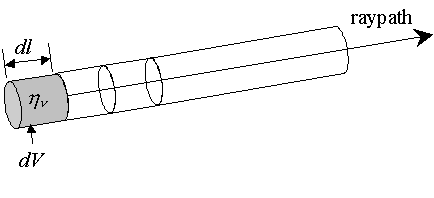
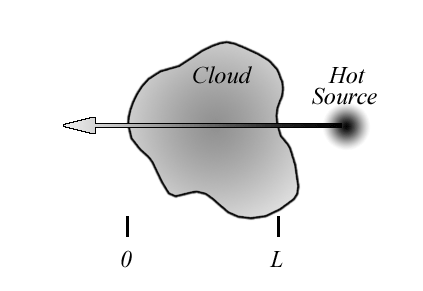

 .
. .
. .
. .
.

